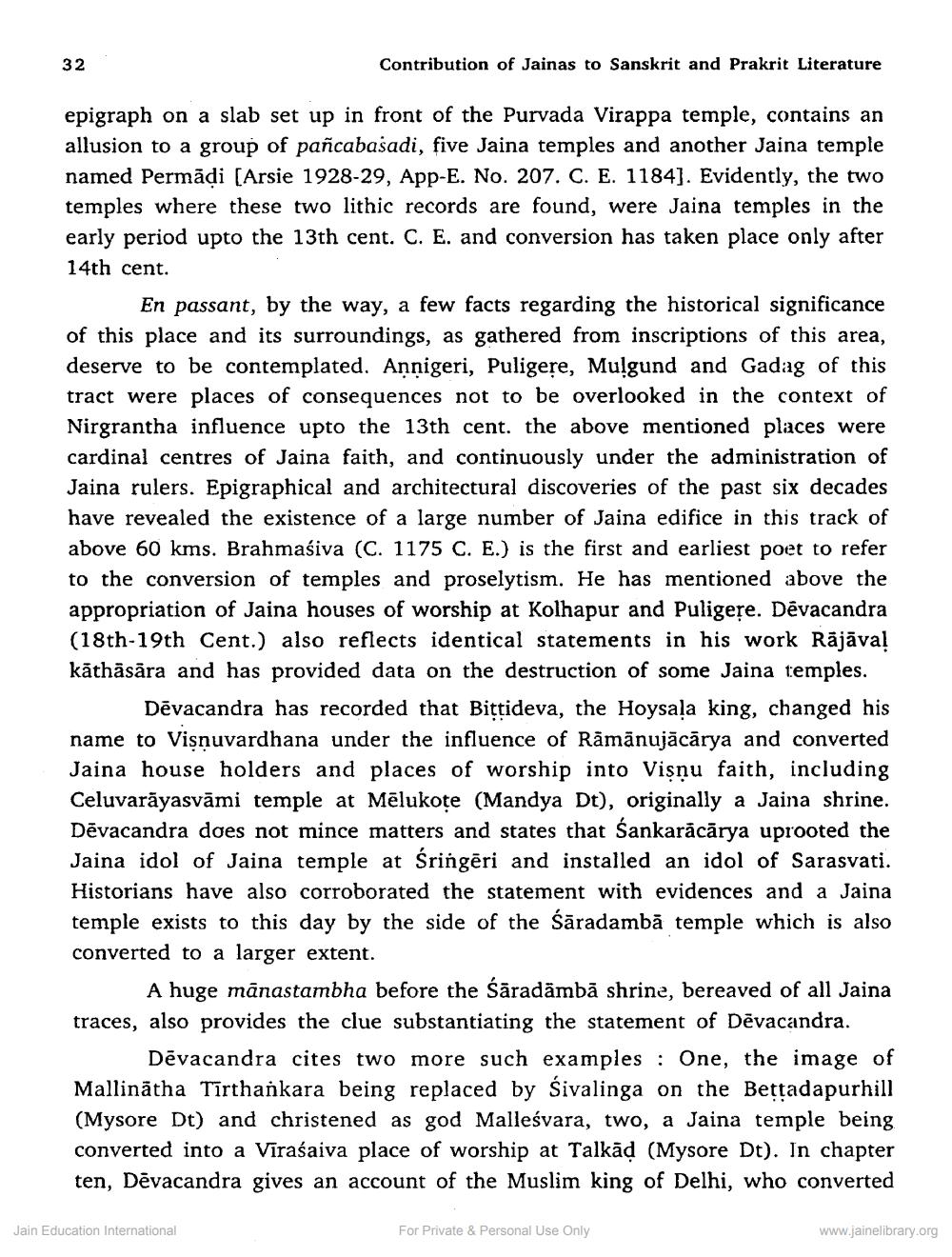________________
32
Contribution of Jainas to Sanskrit and Prakrit Literature
epigraph on a slab set up in front of the Purvada Virappa temple, contains an allusion to a group of pañcabasadi, five Jaina temples and another Jaina temple named Permadi (Arsie 1928-29, App-E. No. 207. C. E. 1184]. Evidently, the two temples where these two lithic records are found, were Jaina temples in the early period upto the 13th cent. C. E. and conversion has taken place only after 14th cent.
En passant, by the way, a few facts regarding the historical significance of this place and its surroundings, as gathered from inscriptions of this area, deserve to be contemplated. Annigeri, Puligere, Mulgund and Gadag of this tract were places of consequences not to be overlooked in the context of Nirgrantha influence upto the 13th cent. the above mentioned places were cardinal centres of Jaina faith, and continuously under the administration of Jaina rulers. Epigraphical and architectural discoveries of the past six decades have revealed the existence of a large number of Jaina edifice in this track of above 60 kms. Brahmasiva (C. 1175 C. E.) is the first and earliest poet to refer to the conversion of temples and proselytism. He has mentioned above the appropriation of Jaina houses of worship at Kolhapur and Puligere. Dévacandra (18th-19th Cent.) also reflects identical statements in his work Rājāva! kāthāsāra and has provided data on the destruction of some Jaina temples.
Dēvacandra has recorded that Bittideva, the Hoysala king, changed his name to Visnuvardhana under the influence of Rāmānujācārya and converted Jaina house holders and places of Worship into Visnu faith, including Celuvarāyasvāmi temple at Mēlukote (Mandya Dt), originally a Jaina shrine Dēvacandra does not mince matters and states that Sankarācārya uprooted the Jaina idol of Jaina temple at Śringēri and installed an idol of Sarasvati. Historians have also corroborated the statement with evidences and a Jaina temple exists to this day by the side of the Sāradamba temple w converted to a larger extent.
A huge manastambha before the śāradämbă shrine, bereaved of all Jaina traces, also provides the clue substantiating the statement of Dēvacandra.
Dēvacandra cites two more such examples : One, the image of Mallinātha Tīrthankara being replaced by Śivalinga on the Bettadapurhill (Mysore Dt) and christened as god Malleśvara, two, a Jaina temple being converted into a Viraśaiva place of worship at Talkād (Mysore Dt). In chapter ten, Dévacandra gives an account of the Muslim king of Delhi, who converted
Jain Education International
For Private & Personal Use Only
www.jainelibrary.org




